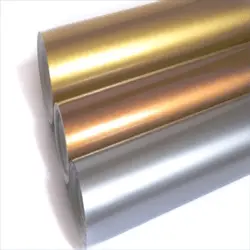
In this article, you will learn about how to sew vinyl.
This type of fabric is great for indoor and outdoor sewing projects because it’s durable, flexible, water-resistant, inexpensive, and versatile!
What is Vinyl?
“Vinyl” is a term used to describe many different types of materials. These may include things like clear plastic sheeting, oilcloth, and faux leather.
Though each has unique properties that are important for you to know when working with them or deciding how best they can be treated in order to maximize their durability during use- these all have some similarities too!
This answer repeats the input without much change other than removing “viny”.
PVC: PVC is your vinyl fabric, which has many great qualities including being tough and resistant to water damage.
You will typically find it in heavy materials with mesh or cloth backing for extra stability, but there are some lighter versions of PVC plastic that can be used alone without any backings.
Oilcloth: Traditional oilcloth was made of lightweight canvas treated with linseed oil and wax to make it water-resistant.
Today’s version is a thin fabric that has been coated in PVC for better waterproofing protection, which makes the material even lighter than its predecessor.
Chalk Cloth: Chalkcloth is perfect for crafting! The fabric can be used in projects like reusable signs, tags, placemats, and home decor.
Similar to oilcloth this material also allows you to draw on it with regular chalk making it great for crafty people who are looking for an easy way of creating wonderful works of art or other fun things that they wish to have around the house.
Laminated Fabric: Laminated fabrics are like oilcloth, except they’re made with cotton instead of plastic. They behave more like traditional fabric than other vinyl materials; it’s soft and flexible without the stiffness that comes from other options.
Pleather: Synthetic alternatives to leather offer a range of textures, colors, and weights that mimic the look and feel of the authentic hide. This is without the expense of ethical concerns.
When it comes to crafting vinyl, don’t confuse the adhesive material with regular fabric. Craft vinyl is a creative option for embellishing projects such as sewing but should not be used when you need to sew itself. Instead, iron-on and sticker options are available that work better in some cases.
What Can I Use It For?
With all of the different types and uses for vinyl, it’s easy to get creative. Create waterproof liners for a day at the beach or wipe clean placemats with just a damp cloth.
The UV resistance makes vinyl a great choice for outdoor upholstery, as well as indoor/outdoor curtains that are durable yet affordable.
Faux leather is found in accessories like handbags but also in garment design and even furniture depending on weight–the options really are limitless! With these tips under your belt, you’ll be able to use this versatile material however you please!
Tips and Tricks For Sewing Vinyl
Before you start sewing with vinyl, read these tips to prepare the fabric, set up your machine, and gather the right tools.
Walking Foot
Vinyl can be difficult to work with because it gets caught under the presser foot. The walking foot has feed dogs which help push both layers of material and a roller helps you sew as well as press your seam at once!
Prepare Your Fabric
Before you prep, your vinyl for cutting and sewing, make sure to check the manufacturer’s instructions. Some materials can be washed or gently warmed in order to remove creases from storage.
This will change its size slightly so it should also always be done before measuring and cutting fabric.
Adjust Stitch Length
Vinyl fabric is too tough for tiny stitches. If you notice your threads tangling or breaking, or if your machine keeps skipping stitches, try switching to a longer stitch length.
Three millimeters is a good rule of thumb but before doing that it’s best to run some tests on what works best with the material in question.
Choose The Right Needle Size
Jeans needles are a type of needle that you can use to create decorative stitches on jeans. The key is knowing the correct size – if it’s 90/14, then this is perfect for stitching leather or denim materials!
Choose The Right Thread
When sewing thick materials, it’s beneficial to use thread that is specifically made for this purpose. If you are expecting your seams will experience stress or weight, then Heavy Duty Thread or Industrial Thread may be the best choice instead of a general-purpose thread.
It’s often a good idea to pull needle thread through the back and tie knots manually so they won’t come undone later on.
Don’t Pin Your Fabric
When working with vinyl, it is difficult to make sure the seams are perfectly straight. It has a tendency of showing every misplaced pin or needle mark and can affect how waterproof your fabric will be after too many little holes form in the material.
If you’re having trouble keeping track of all those pins, try using sewing clips instead! Or if that isn’t an option for some reason, office supply binder clips work just as well on smaller projects like this one!
Avoid Ironing
The fastest way to ruin your fabric is by trying to iron them with an iron. Even though they are water-resistant, they can still be ruined if you try this method of pressing wrinkles out.
A hairdryer or Iron Steamer on a low setting will provide just enough heat without distorting or discoloring the material so that one can flatten their wrinkled clothes easily and quickly.
Grab Your Mallet
If you can’t iron, how exactly are you going to manage all these bulky seams? Grab your trusty rubber mallet and get started! Pounding the material flat with a soft rubber mallet provides the same benefits of pressing as sewing.
This way will not melt or damage it and gives extra anger management opportunities in between pounding!
Choose Matching Thread
Choosing the right thread for your material can be tricky. Not all vinyl fabrics require a heavy-duty thread, but some work best using only industrial strength.
So where does yours lie? Think about not only the weight and strength of the vinyl fabric itself but also how you will use it in your finished project to determine whether an industrial or standard sewing machine is better suited for this job.
If you’re making a garment, it’s important to use heavy-duty thread. If you’re creating vinyl placemats, however, using standard weight would be suitable.
Make Seams With Tape
Painters’ tape is an easy-to-use, inexpensive marking material that will protect your fabric from marker stains. It’s flexible and won’t leave behind any sticky residue after you peel it away.
Store On A Roll
If you want to avoid wrinkles in your vinyl, the best thing that you can do is store it on a roll rather than folding it with other fabrics. You can try hanging vertically using skirt hangers and clips if there are no cardboard cores available.
From the material into accordion folds then hang them so they run vertically while pinned by skirt clips of the hanger loosely at some parts.
Though this won’t be as effective compared to rolling up your vinyl but will prevent most creases caused when stored folded on shelves or boxes.
Choose Your Pattern Wisely
When choosing the right pattern to use with vinyl fabric, half of it is knowing which patterns will minimize bulk and stiffness.
For garments made out or including vinyl, always do your fitting on a toile (practice garment) that allows you to make alterations before putting needle marks in your finished product.
Since vinyl doesn’t stretch much or breathe well at all, avoid very snug-fitting and tailored pieces as they can be uncomfortable when worn and more difficult to execution than other styles.
Vinyl Sewing Machine
Want to know if you can sew vinyl with a regular sewing machine? The answer is YES, but only when using the proper tools.
If you want to make 10 of these bags in a row without any problems, it would be wise for you to invest in the best industrial sewing machine that’s designed specifically for this purpose.
Practice, Practice & Practice
The most important thing to keep in mind when working with vinyl is testing out your sewing machine settings before you begin. Get familiar with the material by doing simple projects, because there are likely going to be mistakes along the way!
If something doesn’t go as planned, don’t get too frustrated—you’ll become a pro soon enough!
Some Last Words
Now, I have explained all the steps & tricks above. Using these tips sewing vinyl is very easy. Now you can make your vinyl projects without any hassle.
Happy Sewing & Good Luck!
We independently research our recommended products. However, we may receive commissions if a purchase is made from our clicks
Check Out These Posts Too!

Robert Patricia
Robert Patricia is a data analytic and content creator. He has worked extensively with large data sets to glean insights for both public and private sector clients. He has used this knowledge to create compelling content for brands across the internet. Albert also enjoys creating content for websites and social media. He is an expert at creating catchy headlines and understands how to capture the attention of readers.
